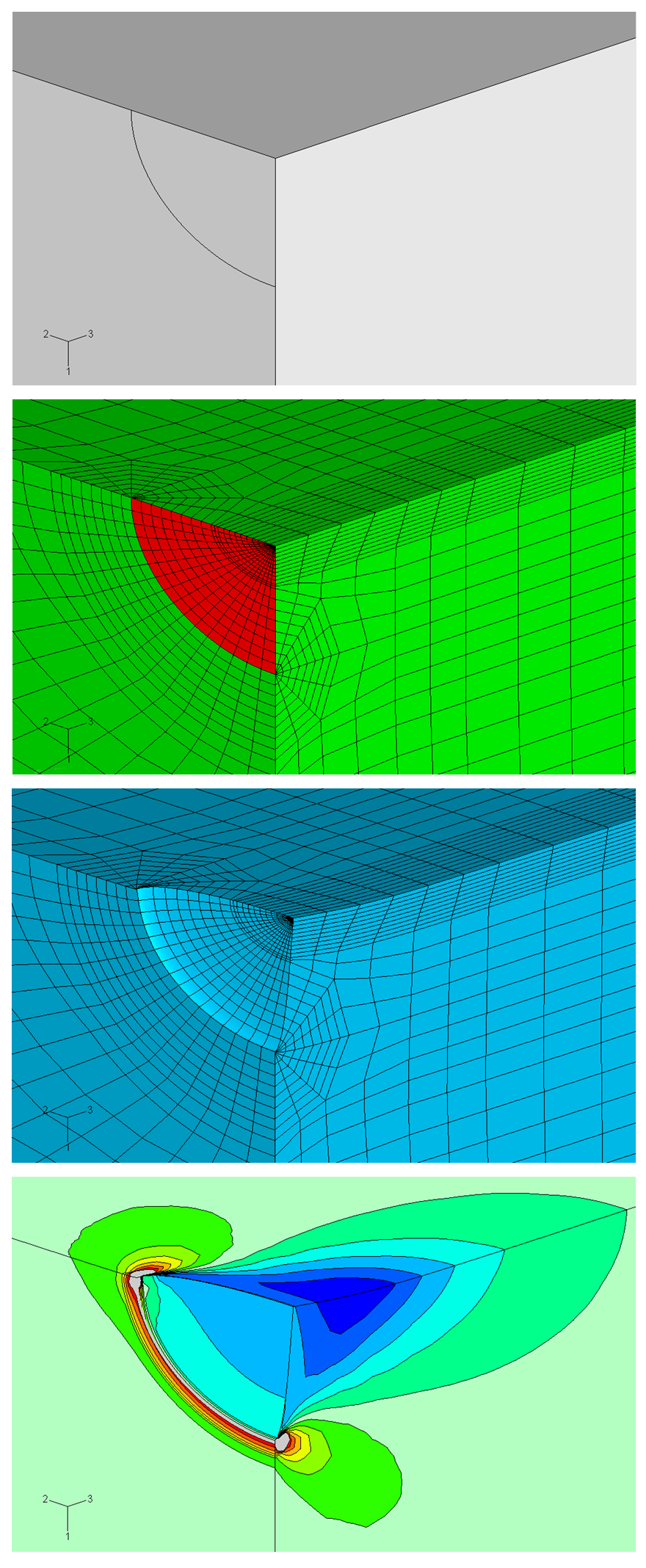Technical
Finite Elements & Fracture Mechanics
Overview
The primary fracture mechanics parameters that may be of interest when analysing a defect are:
The stress intensity factor approach was developed by Irwin in the 1950s following on from the elastic strain energy approach to brittle fracture developed by Griffith from the 1920s. Irwin's work led to the foundations for the concept of linear elastic fracture mechanics (LEFM) which is still fundamental in most crack propagation analyses.
An important relationship for stress intensity factors in linear elastic analysis is based on the Westergaard equations that link the stress intensity factors to the displacement field around the crack tip. When used with the finite element method, these equations allow displacement solutions to be used to generate stress intensity factors. This approach does not require any special capability in the finite element code and is available in all of the Zencrack f.e. interfaces.
The calculation of energy release rate in finite element analyses was first demonstrated by Parks1 and Hellen2 in independent publications. The method which they both presented, commonly referred to as the stiffness derivative or virtual crack extension technique, was formulated specifically for finite element applications. The change in energy is calculated for a virtual crack extension at the crack front. The accuracy of this method is known to depend upon the magnitude of the applied virtual crack extension.
A differential formulation for the calculation of energy release rate was presented by de Lorenzi3. This formulation also uses virtual crack extensions, but is a continuum mechanics approach. The finite element formulation of this technique produces results that do not depend upon the magnitude of the applied virtual crack extension.
These original energy release rate and j-integral methods have been modified and expanded to include additional load terms and implementations are available in Abaqus, Ansys and Simcenter Nastran to allow calculation of energy release rates and j-integrals. Abaqus and Ansys also allow calculation of additional interaction, creep and T-stress contour integrals. Zencrack uses these capabilities to calculate fracture mechanics parameters - the supported methods in the interfaces are shown in the table on the Finite Element Interfaces page.
By default, j-integral and displacement based results are always calculated for a particular load increment from the f.e. analysis and are included in the output files. The default used by Zencrack to drive crack growth calulations is the maximum energy release rate derived from the j-integral method.

References
1. Parks, D.M., "A Stiffness derivative Finite Element Technique For Determination Of Crack Tip Stress Intensity Factors", Int. J. Frac., Vol.10 (487-502), 1974.
2. Hellen, T.K., "On the Method of Virtual Crack Extensions", Int. J. Num. Met. Engn. (187-207) 1975.
3. de Lorenzi, H.G., "On the Energy Release Rate And The J-Integral For 3-D Crack Configurations", Int. J. Frac., Vol.19 (183-193) 1982.
Technical
Finite Elements & Fracture Mechanics
More in this category